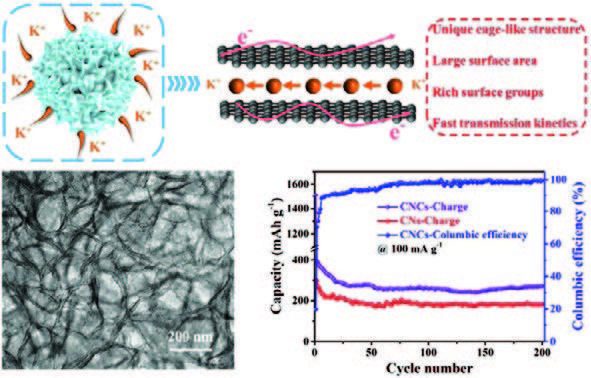Y. Hu, C. Tang, F.T. Lv, A.J. Du, Z.-S. Wu, H.J. Zhang*
Small Methods, 2022, 6, 2101627.
DOI: 10.1002/smtd.202101627 [PDF]

Carbon nanocages (CNC), with unique merits of morphology and structure, have attracted increasing attention for energy storage and conversion. However, the synthesis of CNCs reported so far suffers from relatively harsh conditions and expensive raw materials. Herein, porous CNCs have been intelligently designed using low-cost glucose as the carbon precursor via a facile K-functionalized carbon quantum dots (K-CQDs) induced assembly route under hydrothermal process. The resulting CNCs have a unique cage-like structure, large surface area, and rich carboxyl groups. With these elegant structural merits, the as-made CNCs anode shows a high reversible capacity of 270 mAh g−1 at 100 mA g−1 after 200 cycles and a long-term cycling stability of 206 mAh g−1 at 2000 mA g−1 after 4000 cycles. An intercalation reaction mechanism with the K+ intercalation compound is further identified through an in-situ Raman technique. The density functional theory simulations reveal that abundant carboxyl groups inherited from K-CQDs can significantly promote the potassium storage capacities of the CNCs electrode.